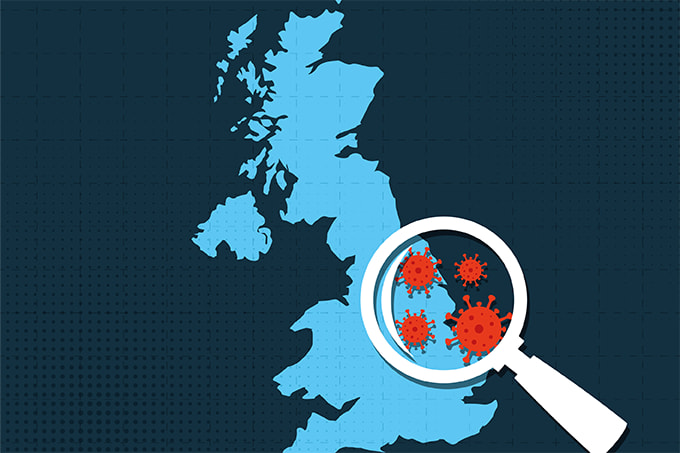
Pathology is undergoing an exciting transformation – digitization. We hear about it all the time. “Digitization and artificial intelligence will revolutionize the field!” its proponents declare.
Love it or hate it, digital pathology is the future. There will be quick access to slides from digital archives, reduced turnaround times for second opinions, image analysis of biomarkers for precision medicine, and artificial intelligence algorithms that will hugely impact pathologists’ daily lives. Digitization was also on our institute’s “to do” list. We wanted to save pathologists’ time and resources and allow them to benefit from the added value of a digital image. We also defined a clear “non-aim” – to have pathologists away from colleagues, working from home (or from the beach, computer in one hand, caipirinha in the other!). In 2018, we put together a digital pathology team. We met, we planned, we discussed, we dabbled in image analysis… we procrastinated. Why? Because we could. Change is often unwelcome, especially if it threatens to take away the one tool that defines your profession – in this case, the microscope.
In spring 2020, the white horseman of the apocalypse hit our diagnostic service. Switzerland entered a national lockdown on March 17. Private clinics closed and only critical surgeries were performed. Lab and medical staff were on rotations at our institute to maintain social distancing. But what would happen to our cancer patients if our specialists were forced to stay away? This was the scenario we never planned for: our “non-aim.” It was time to get pathologists working from afar.
Now motivated, we moved quickly. We partnered with an enthusiastic external vendor who worked side-by-side with us to customize a slide viewer and image management system and to partially integrate them with our laboratory information system (LIS). On a near-daily basis, we provided feedback that led to iterative improvements until the setup allowed remote sign-out of cases. Finally, we performed a validation study under our quality management system guidelines, confirmed the safety of our workflow, and rolled out the necessary home office hardware to our experienced pathologists.
Three weeks after lockdown began, we performed our first digital sign-outs – something we continued until May 11, when lockdown measures relaxed and most medical staff returned to work full-time. We still use digital sign-out for some of our cases, aiming to build experience and continue integration with our LIS and artificial intelligence algorithms. COVID-19 showed us the importance of digitization, helped us accept the technological opportunities presented to us, and underlined the fact that pathology diagnostics can survive anything – even a pandemic.

I’ve had to adjust to many things since coming to live and work in New York City in 2017. Having grown up in the suburbs of South Jersey and done my fellowship in tiny Charlottesville, Virginia, stepping into my first director-level position in the Bronx was a big – and rewarding – challenge. But 2020 has been something else altogether.
Like many of my colleagues, my experience of the pandemic so far has been a wild one. I can still remember the heady days of January, watching reports of a novel disease in China and believing that it would be a minor annoyance, perhaps a flash in the pan like SARS. In February, I went to Spain and remember catching a news report of towns in Italy under quarantine. By then, I should have known better – but still I thought this would be short-lived. Remembering that time is like looking back and cringing at a terrible opinion from my high-school self, but from only six months ago. The longest six months I’ve lived through, perhaps, but six months nonetheless.
Back in the US, things changed rapidly. As soon as cases started rising in New York, things became significantly more real. Lockdowns started and we had to deal with the reality of finding PPE. Supplies were tight even on patient care wards – so how were we going to supply our technologists who were worried for themselves and their families? Not to mention that staffing, frequently below 100 percent during normal times, would quickly decrease to skeleton crews if we had a significant outbreak. Luckily, the director of hematology, Morayma Reyes Gil, secured a supply of masks for technologists that kept us stocked until PPE supply chains were worked out.
We were lucky; our technologists were mostly spared any infection. But a number of lab directors came down with COVID before mask-wearing was, or could be, standard practice. I was drafted to assist with our hastily assembled COVID-19 accessioning department (dubbed the “COVID Command Center”) after the previous head came down with the disease. Shortly after she fell sick, another director with whom I had close contact contracted the virus as well. The head of the command center and I had frequent talks about our certainty that we were infected and would notice symptoms soon. At least one member of our command center team came down with COVID-19; her partner was hospitalized with it. Then, in April, we heard that a member of our staff had passed away from COVID-19. Even as we worked to fight the disease, it had seemed distant – but that moment made everything snap into focus.
Now, months on, with the New York State infection rate hovering at 1 percent, things seem to have stabilized. Lab operations are mostly back to normal now (albeit a “new normal”). I am back to my usual job in the hematology lab, though I am still working on a SARS-CoV-2 serology project. But everything, from the masks to the still-depressed, eerily subdued New York City traffic, reminds me that things are not really back to normal. We are all going to carry this year with us for a long time.




